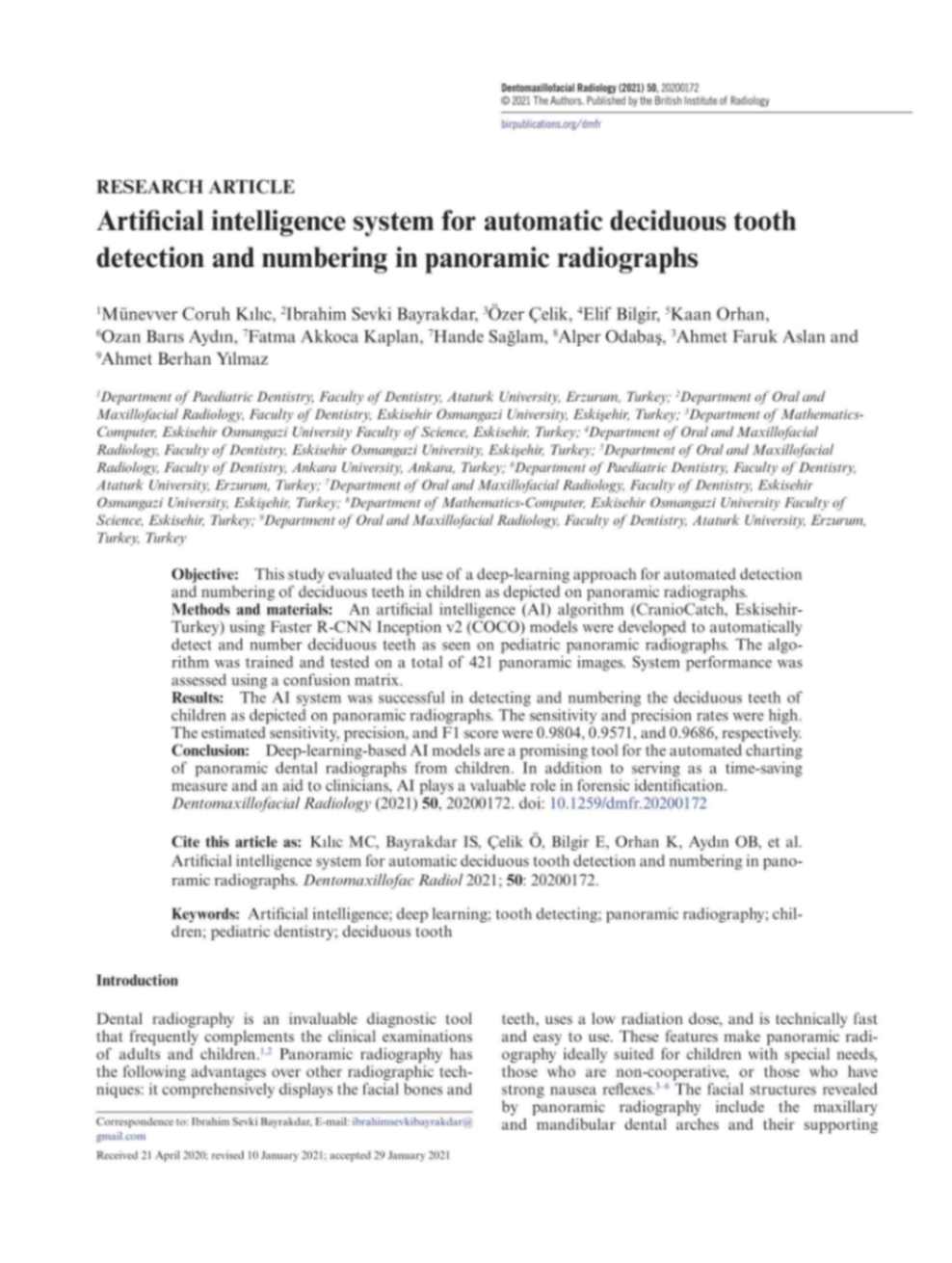Predicting Extraction Difficulty of Impacted Maxillary Third Molars Using a Deep Learning Approach
Objective
This study aims to evaluate the ability of a deep learning (DL) model to predict the surgical difficulty of impacted maxillary third molars using panoramic images.
Methods
- Data Collection: Panoramic radiographs from 708 patients were used.
- DL Model: The YoloV5x architecture was employed for automatic segmentation and classification, analyzing depth (V), angulation (H), maxillary sinus relation (S), and ramus relation (R).
- Training and Validation: Data were split into 80% training, 10% validation, and 10% test sets. Manual segmentations by expert radiologists served as the ground truth.
- Performance Metrics: Performance was evaluated using Dice Similarity Coefficient (DSC), Intersection over Union (IoU), precision, recall, and overall segmentation accuracy.
Findings
- Segmentation Accuracy: The DL model achieved high accuracy and DSC, closely matching manual segmentations.
- Efficiency and Consistency: The DL model significantly reduced segmentation time and provided consistent results across different patients and imaging conditions.
Clinical Importance
- Diagnosis and Planning: AI can assist in the quicker and more accurate diagnosis of sinus pathologies and provide precise anatomical maps for dental implant planning and surgical interventions.
- Comparison with Manual Segmentation: Minor discrepancies were observed in some cases due to anatomical variations, highlighting the importance of continuous model training and validation.
Discussion
- Advantages of AI: AI offers a rapid and consistent alternative to manual segmentation, reducing the workload for radiologists and speeding up clinical decision-making.
- Challenges and Future Directions: There is a need for extensive and diverse training datasets to enhance model generalizability. Future research could explore the integration of AI segmentation with other diagnostic tools and its application to different anatomical regions and pathologies.
Conclusion
AI systems, particularly those based on CNNs, are highly effective for the automatic segmentation of impacted maxillary third molars in CBCT images. The high accuracy and efficiency of AI-driven segmentation hold great promise for enhancing various clinical applications in dentistry and medicine. Continued advancements in AI technology and further research are essential to fully realize its potential in clinical practice.
I Want to Write a Scientific Research Project
CranioCatch is a global leader in dental medical technology that improves oral care in the field of dentistry. With AI-supported clinical, educational, and labeling solutions, we provide significant improvements in the diagnosis and treatment of dental diseases using contemporary approaches in advanced machine learning technology.
CranioCatch serves thousands of patients with dental health issues worldwide every day with its innovative technologies. That’s why we eagerly look forward to meeting our valued dentists who wish to work in the field of 'Scientific Research in Dentistry'.



 Contact Us
Contact Us

